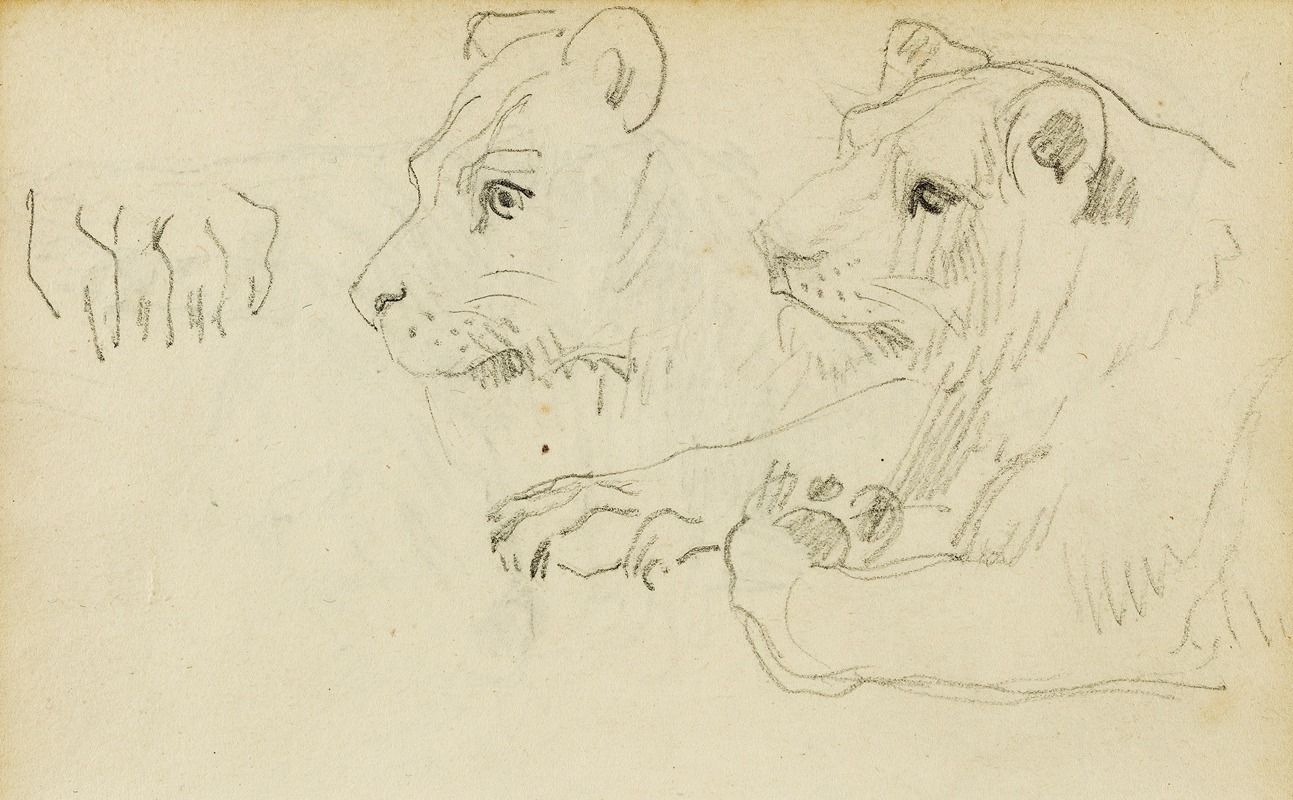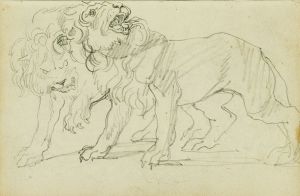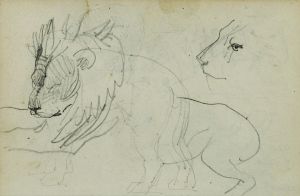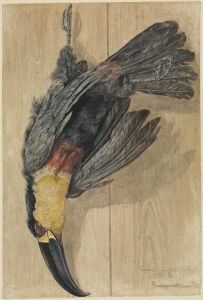
Studies of the head and forelegs of a lioness
A hand-painted replica of Théodore Géricault’s masterpiece Studies of the head and forelegs of a lioness, meticulously crafted by professional artists to capture the true essence of the original. Each piece is created with museum-quality canvas and rare mineral pigments, carefully painted by experienced artists with delicate brushstrokes and rich, layered colors to perfectly recreate the texture of the original artwork. Unlike machine-printed reproductions, this hand-painted version brings the painting to life, infused with the artist’s emotions and skill in every stroke. Whether for personal collection or home decoration, it instantly elevates the artistic atmosphere of any space.
"Studies of the Head and Forelegs of a Lioness" is a notable work by the French Romantic painter and lithographer Théodore Géricault. Born on September 26, 1791, in Rouen, France, Géricault is best known for his dramatic and expressive style, which played a significant role in the development of the Romantic movement in French art. His most famous work, "The Raft of the Medusa," exemplifies his mastery in depicting human suffering and heroism.
The drawing "Studies of the Head and Forelegs of a Lioness" showcases Géricault's keen interest in animal anatomy and his exceptional skill in rendering lifelike representations. This piece is a study, which means it was likely created as a preparatory work for a larger composition or simply as an exercise to understand the subject better. The drawing focuses on the detailed observation of a lioness's head and forelegs, capturing the powerful musculature and the expressive features of the animal.
Géricault's fascination with horses and other animals is well-documented. He often visited slaughterhouses and veterinary schools to study animal anatomy firsthand. This dedication to understanding the physical structure of animals is evident in the precision and vitality of his drawings. In "Studies of the Head and Forelegs of a Lioness," Géricault employs a combination of fine lines and shading to convey the texture of the lioness's fur and the strength of her limbs.
The medium used for this drawing is typically pen and ink, sometimes combined with wash or chalk, which allows for a range of tonal variations and intricate details. Géricault's technique demonstrates his ability to capture both the form and the spirit of the lioness, making the study not only a scientific observation but also a work of art in its own right.
This drawing is part of a broader body of work that includes studies of horses, lions, and other animals, reflecting Géricault's broader interest in the natural world and his commitment to realism. His animal studies were highly regarded by his contemporaries and continue to be appreciated for their technical excellence and expressive power.
"Studies of the Head and Forelegs of a Lioness" is housed in various collections, with some pieces held in major museums and private collections. These studies provide valuable insight into Géricault's artistic process and his approach to capturing the dynamism and vitality of his subjects.
Théodore Géricault's contributions to art extend beyond his animal studies. His works often addressed contemporary issues and human experiences, characterized by a dramatic intensity and a deep emotional resonance. Despite his relatively short life—he died at the age of 32 on January 26, 1824—Géricault left a lasting impact on the art world, influencing subsequent generations of artists.
In summary, "Studies of the Head and Forelegs of a Lioness" exemplifies Théodore Géricault's meticulous approach to animal studies and his exceptional ability to render lifelike and dynamic representations. This work highlights his dedication to realism and his profound understanding of animal anatomy, contributing to his legacy as a pivotal figure in the Romantic movement.


















